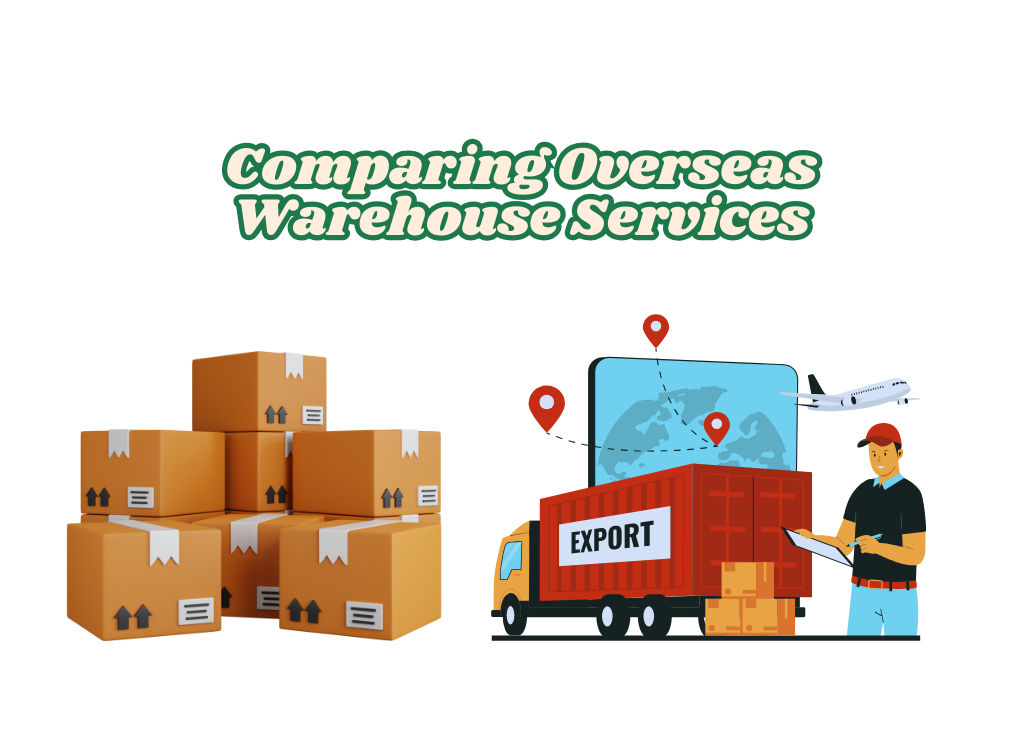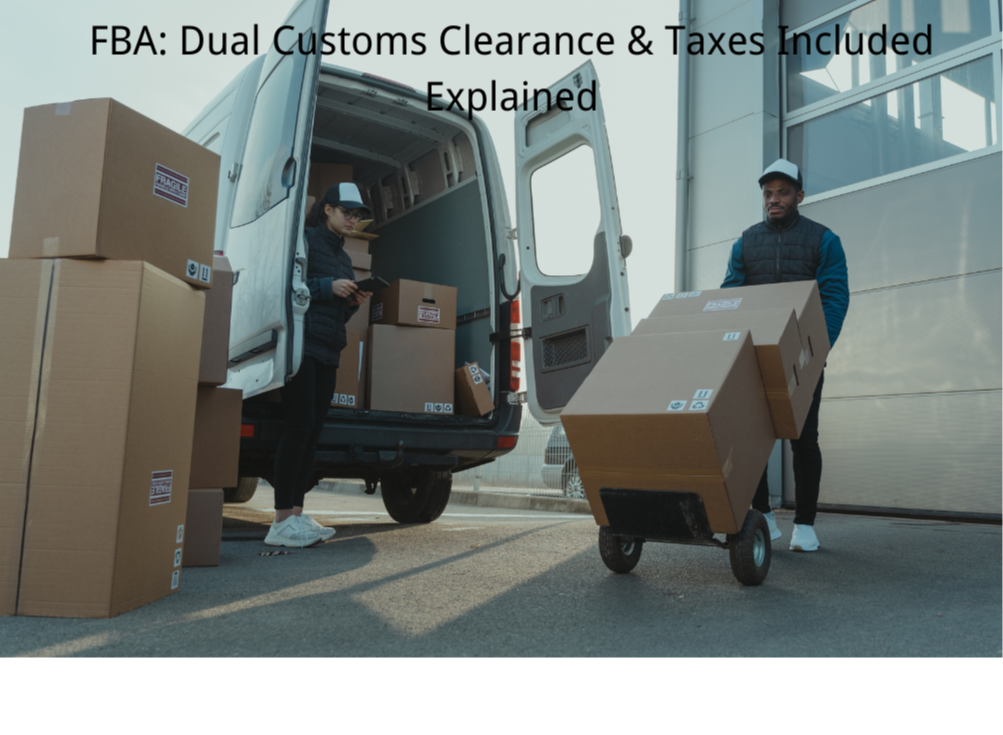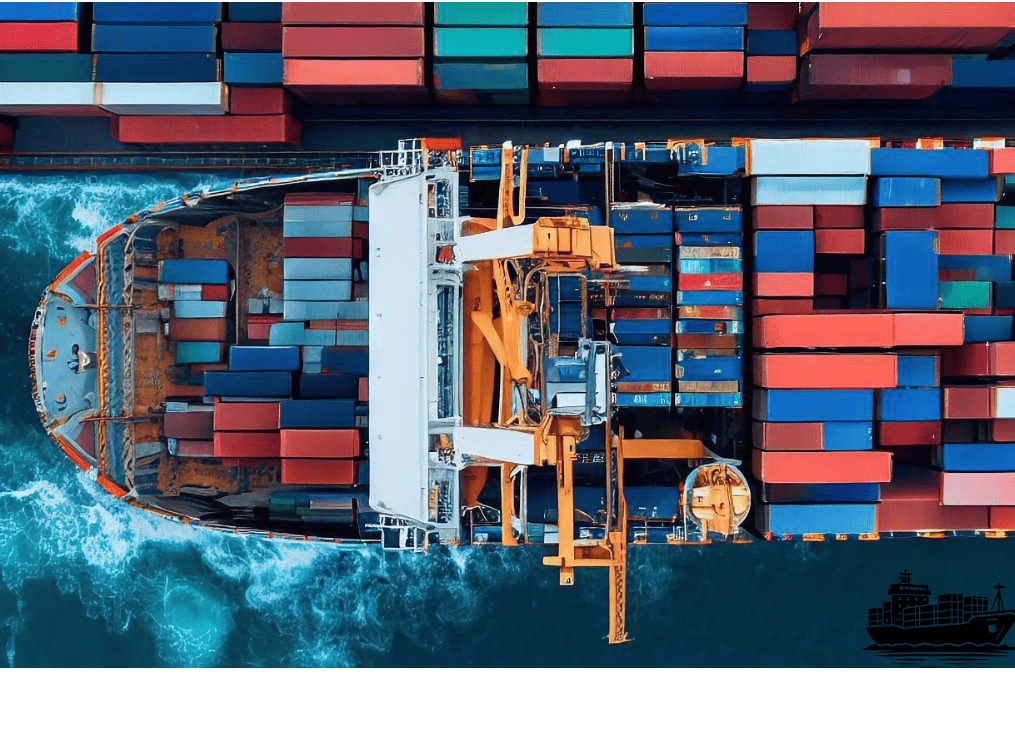What are the Main Reasons for the Rise of Amazon's Overseas Warehouses in the United States
In the United States, like all online shoppers, there are also some people who want to buy Chinese products online, and Chinese merchants also want to sell products to the United States through the Internet. At this time, many Amazon merchants will choose to store their products in overseas warehouses in the United States, prompting reliance Spectrum’s overseas warehouses in the United States are becoming more and more popular. Today, Silk Road Internet will introduce to you the main reasons for the rise of Amazon’s overseas warehouses in the United States.
The Main Reasons for the Rise of Amazon's Overseas Warehouses in the United States are as Follows:
- The first point is that Amazon’s cross-border e-commerce requirements for the logistics industry are gradually increasing.
In China, returns and exchanges are a common problem in online shopping. Therefore, the mentality of American buyers is the same as that in China, that is, they hope that the products will be delivered to them as soon as possible, and they also think that if they are not satisfied, they can easily return or exchange the goods. How to solve this problem The solution to the problem is to get the products out of China, store them locally in the United States, provide the same localized services as American e-commerce, and make full use of the advantages of Chinese manufacturing to participate in product competition. This is also the key to the sustainable development of Chinese sellers in Amazon e-commerce. one.
- The second point is that U.S. overseas warehouses have great advantages for both buyers and sellers.
In fact, whether it is an individual e-commerce or a corporate store, if you want to make Amazon bigger and stronger, you must not only maintain your own e-commerce platform, but also need an overseas warehousing that can reduce costs, speed up delivery time, and avoid risks. In the overseas US market, local delivery is easier to gain the trust of buyers. Most traditional buyers believe in fast local services. When the price difference is not big, they are more willing to choose goods from US overseas warehouses. Shipping from here is equivalent to domestic delivery, which is faster and safer. It can bring sellers a better cross-border trade shopping experience, save more time and reduce error rates.
- The third point is that Amazon’s US overseas warehouses have driven the upgrading of the e-commerce industry chain.
In the long run, the increasing improvement of digital logistics will further promote the upgrading of the cross-border e-commerce industry chain. Amazon's U.S. overseas warehouses have adopted a data-based and visual operation method, and our country can follow this model and manage logistics through the data of U.S. overseas warehouses and analyze time point data in the process, which will benefit sellers in the distribution process and finished product delivery process. and other aspects to identify problems in supply chain management
Click here get shipping quote: https://globalshippingauto.com/fcl-shipping-from-china
2024-11-08
Comparing Overseas Warehouse Services: What to Look For
Are you struggling to choose the perfect overseas warehouse for your e-commerce business?You're not alone. Whether you're working with a China freight forwarder or managing logistics on your own, finding the right fit can feel overwhelming. Let's break down everything you need to know to make the best choice for your business.Understanding Different Warehouse Types (And Why It Matters)Selecting the right type of warehouse is like choosing a business partner - it needs to match your operational style, budget, and growth plans.Each warehouse type comes with its own unique advantages and trade-offs. Let's explore your options and find out which one aligns best with your business goals.E-commerce Platform Warehouses (Like Amazon FBA)Ever wondered why some sellers seem to dominate marketplace rankings? Platform warehouses might be their secret weapon. Here's what you get:✨ Built-in Platform Integration: Your products get processed and shipped lightning-fast📈 Better Visibility: Think higher search rankings and more "recommended" placements🎯 Prime Eligibility: Tap into millions of Prime subscribersReal-world example: A small electronics seller saw their sales jump 40% in their first month after switching to Amazon FBA, mainly due to Prime badge visibility.Self-Operated Warehouses: Taking ControlThink of this as having your own overseas business headquarters. Is it right for you?🎛️ Complete Control: Design your storage layout? Check. Set your own rules? Double-check.💰 Long-term Savings: Higher upfront costs, but potentially better margins over time⚠️ Management Challenge: You're the captain of this ship - exciting but demandingThird-Party Warehouses: The Flexible FriendNeed a balance between control and convenience? Third-party warehouses might be your sweet spot:🔄 Multi-Platform Support: Sell everywhere without the headache📦 Comprehensive Services: From customs clearance to quality checks💪 Scalability: Grow or shrink your storage needs as neededPublic Warehouses: Sharing Is Caring (And Saving)Perfect for smaller businesses or those testing new markets:👥 Cost Sharing: Split expenses with other businesses🏃♂️ Quick Start: No major investment needed📏 Standard Processes: Less flexibility, but proven systemsBonded Warehouses: The Cash Flow ChampionDid you know you can delay import duties until you actually sell your products?💵 Better Cash Flow: Pay duties only when products leave the warehouse📋 Strict Compliance: Heavy regulation, but worth it for the right business🎯 Ideal for: High-value goods or bulk importsService Types: Finding Your Perfect MatchNow that we understand the different warehouse types, let's dive into the various service models available.The right service type can dramatically impact your operational efficiency and customer satisfaction. Think of these services as different tools in your logistics toolkit - each designed for specific business scenarios.Full-Service WarriorsThese warehouses do it all:🎯 One-Stop Solution: Storage, fulfillment, returns - you name it⚡ Quick Market Response: Perfect for fast-moving consumer goods💪 Value Add: Some even handle product customization and packagingDrop-Shipping SpecialistsRunning a lean operation? This might be your answer:🚀 Speed Demons: Specialized in quick, single-item fulfillment💰 Cost-Effective: Bulk shipping rates for individual orders📦 No Inventory Headaches: Perfect for testing new productsTransit ProsThink of these as your logistics pit stop:🔄 Quick Turnaround: Minimal storage, maximum movement🌐 Network Power: Great for complex international shipping routesCross-Docking ChampionsWhen speed is everything:⚡ Ultra-Fast Processing: Items barely touch the ground🚛 Seamless Integration: Perfect for time-sensitive deliveriesAfter-Sales HeroesBecause the sale isn't the end of the story:🛠️ Full Support: Returns, repairs, and refurbishment💎 Perfect for: High-value items needing warranty serviceMaking Your Choice: Key Questions to AskBefore you decide, ask yourself:What's my monthly shipping volume?How fast do my customers expect delivery?What's my budget for warehousing?Do I need special handling for my products?Which markets am I targeting?Pro Tips for Success🎯 Start small with a flexible provider📊 Track performance metrics religiously🤝 Build relationships with multiple providers📈 Regular review and optimization is keyRemember: The right warehouse partner can make or break your cross-border e-commerce success. Take your time, do your research, and choose a solution that can grow with your business.
2025-01-08
FBA: Dual Customs Clearance & Taxes Included Explained
Navigating the complexities of international shipping can be daunting for Amazon sellers. One solution that has gained traction is FBA Dual Customs Clearance & Taxes Included. This comprehensive logistics service simplifies the process, ensuring your products reach Amazon’s warehouses smoothly and efficiently. In this article, we’ll delve into what dual customs clearance and taxes included mean for your FBA business, how it works, and the benefits and considerations you should be aware of.What is FBA Dual Customs Clearance & Taxes Included?FBA Dual Customs Clearance & Taxes Included is a logistics service tailored for Amazon sellers that covers the entire shipping journey from your warehouse in China to Amazon’s FBA warehouses in your target country, such as the United States. This service encompasses two main components:1. Dual Customs ClearanceDual customs clearance refers to the handling of customs procedures both in the exporting country (e.g., China) and the importing country (e.g., USA).Export Customs Clearance: In the exporting country, the logistics provider manages all necessary export declarations and paperwork. This ensures that your goods comply with local export regulations and are cleared for shipment.Import Customs Clearance: Upon arrival in the destination country, the same logistics provider takes care of the import customs process. They handle the necessary documentation, inspections, and any other requirements to ensure your products pass through customs without delays.2. Taxes IncludedTaxes included means that the logistics provider’s quote encompasses all potential import duties, Value-Added Tax (VAT), and other related fees. As a seller, you won’t need to worry about these additional costs because they are already factored into the service fee.How Does It Work?Here’s a step-by-step overview of how FBA Dual Customs Clearance & Taxes Included operates:Pickup from Your Warehouse: The logistics provider collects your products from your warehouse.International Shipping: Your goods are transported via air or sea to the destination country.Export and Import Customs: The provider handles both export and import customs clearance, ensuring compliance with all regulations.Tax Payment: All applicable duties and taxes are calculated and included in the service fee.Delivery to Amazon FBA: Finally, the products are delivered directly to Amazon’s FBA warehouses, ready for fulfillment.Benefits of Dual Customs Clearance & Taxes Included1. Simplified ProcessHandling customs can be complex and time-consuming. By opting for a dual customs clearance service, you delegate this responsibility to experts, allowing you to focus on growing your business.2. Cost PredictabilityWith taxes and duties included in the service fee, you avoid unexpected expenses. This transparency helps you manage your budget more effectively.3. Faster ShippingProfessional handling of customs procedures can significantly reduce delays, ensuring your products reach Amazon’s warehouses promptly and remain available for sale.4. Compliance AssuranceLogistics providers experienced in international shipping are well-versed in the latest regulations. This reduces the risk of non-compliance, which can lead to fines or seized goods.When to Use Dual Customs Clearance & Taxes IncludedThis service is particularly beneficial for sellers who:Lack Expertise: If you’re unfamiliar with the intricacies of international shipping and customs regulations.Seek Efficiency: When you want to streamline your logistics process and minimize delays.Prefer Predictable Costs: If you want to include all potential fees in your shipping budget.Handle Special Goods: When your products require special handling or documentation for customs clearance.Risks and ConsiderationsWhile FBA Dual Customs Clearance & Taxes Included offers many advantages, it’s essential to be aware of potential risks:1. Ownership and Tax IssuesUsing a freight forwarder’s TAX/VAT/EORI number can sometimes lead to issues with ownership rights and the inability to claim import VAT deductions. Ownership of goods during international shipping can become blurry if your logistics provider handles the customs process using their own tax identification. This might prevent you from claiming import VAT refunds, which could have been beneficial if you were the Importing Party. You need to ensure that your agreement with the logistics provider clearly defines these aspects to avoid complications with the tax authorities.2. Regulatory ComplianceIncreasingly stringent tax and customs regulations, especially in regions like Europe and the USA, can pose legal and financial risks. Failing to comply with evolving regulations could result in fines, delays, or even seized goods. For example, some goods require special documentation or certifications, and missing these requirements can halt shipments in customs.3. Seasonal Limitations and Storage ChallengesIn busy periods, such as Black Friday or holiday seasons, Amazon’s FBA warehouses often experience storage limitations. This can result in costly delays or restrictions on the amount of inventory you can send to Amazon. Choosing an FBA logistics provider who understands these seasonal challenges and can plan shipments accordingly can help mitigate this issue.Choosing the Right ProviderSelecting a trustworthy logistics partner is crucial. Ensure they have a solid track record, understand your specific needs, and comply with all relevant regulations to avoid potential legal and economic losses. Here are some best practices for choosing the right provider:Experience with Amazon FBA: Make sure your logistics provider has experience working specifically with Amazon FBA. This ensures they understand the specific packaging, labeling, and documentation requirements for FBA shipments.Clear and Transparent Pricing: Request detailed pricing breakdowns, including all potential extra charges such as cargo insurance, documentation fees, and customs clearance charges. This helps you avoid hidden costs during the shipping process.Check for Compliance and Certifications: Ensure the provider complies with all customs, VAT, and import/export regulations. The logistics provider should be able to provide evidence of tax registration or customs certification to avoid complications during customs processing.Capacity to Handle Seasonal Peaks: Choose a logistics partner who can adjust to peak seasons by managing warehouse space and timely shipping to prevent storage restrictions at Amazon's FBA warehouses.Customer Service & Problem Resolution: A reliable logistics provider should offer prompt customer service and the ability to resolve any issues quickly, especially when things go wrong during transit or customs clearance.Best Practices for Using Dual Customs Clearance & Taxes Included1. Choose Reputable ProvidersResearch and select logistics companies with proven expertise in dual customs clearance and tax-inclusive services. Look for reviews, testimonials, and case studies that demonstrate their reliability.2. Ensure ComplianceStay informed about the latest customs and tax regulations in your target market. Collaborate closely with your logistics provider to ensure all documentation and procedures are up to date.3. Plan for ContingenciesDespite thorough planning, unexpected issues can arise. Have a contingency plan in place to handle delays or complications in customs clearance. Ensure you have the contact details of both your provider and Amazon’s support team to resolve issues quickly.4. Monitor and ReviewRegularly review your logistics process and costs. This helps identify areas for improvement and ensures you’re getting the best value from your logistics provider. Continuously track changes in tax and customs regulations to adjust your process as needed.ConclusionFBA Dual Customs Clearance & Taxes Included is a valuable service for Amazon sellers looking to simplify their international shipping and logistics. By handling both export and import customs procedures and including all relevant taxes in the service fee, this solution offers a streamlined, cost-effective way to manage your FBA shipments. However, it’s essential to choose a reputable provider and stay informed about regulatory requirements to maximize the benefits and minimize potential risks.Embracing this comprehensive logistics service can free you from the complexities of international shipping, allowing you to focus on what truly matters—growing your Amazon business and reaching customers worldwide.
2025-03-07
How to Calculate Taxes for FBA Ocean Freight First Leg
Navigating tax calculations for FBA ocean freight shipments remains one of the most critical yet challenging aspects of global e-commerce. Import duties and fees can account for 15-30% of total logistics costs, directly impacting profit margins and pricing strategies.Many sellers underestimate the complexity of customs compliance, particularly when dealing with multi-country regulations and frequent tariff updates. A single HS code misclassification can trigger audits, delayed shipments, or penalties exceeding 50% of product value.This guide addresses these pain points through a systematic approach to tax management. We’ll explore practical strategies for balancing compliance requirements with cost optimization, supported by real-world examples and actionable tools.Product Classification via HS CodesAccurate HS code assignment forms the foundation of tax calculations. These 6-10 digit codes, standardized across 200+ countries, determine both duty rates and eligibility for trade agreements like USMCA.Common classification errors include misidentifying material compositions (e.g., organic vs synthetic fabrics) or functional attributes (e.g., electrical vs mechanical components). Luxury goods and electronics face particularly stringent scrutiny, with error rates exceeding 22% according to CBP data.Pro Tip: Use the USITC’s official Harmonized Tariff Schedule database rather than third-party tools for definitive code verification.Channel Selection – Tax-Inclusive vs Self-TaxTax-inclusive shipping channels simplify logistics by bundling duties into all-inclusive rates. Major providers like Flexport typically charge $3.50-$5.00 per kg for this service, ideal for sellers prioritizing predictability over cost control.Self-tax channels require direct payment to customs authorities but offer 10-25% potential savings through duty drawback programs. This option suits high-volume shippers with dedicated compliance teams, though it increases administrative workload by 15-20 hours monthly.Establishing the Tax BaseCustoms valuation follows strict hierarchy:Transaction value of imported goodsIdentical goods valueSimilar goods valueDeductive value (resale price minus costs)Computed value (production cost + profit)Example: A $50,000 machinery shipment with $8,000 freight costs would have a $58,000 tax base. If customs disputes the declared value, they might reference identical goods sold at $65,000, increasing taxable value by 12%.Applying Tax Rates and Additional FeesBase duty rates range from 0% (books) to 37.5% (certain footwear), with notable exceptions:Section 301 tariffs: Up to 25% on Chinese-origin goodsAnti-dumping duties: 75-250% on specific steel/aluminum productsMPF (Merchandise Processing Fee): 0.3464% of declared value (min $29.22)State-specific requirements add complexity – California charges 7.25% sales tax on commercial imports, while Oregon imposes none.Thresholds and Compliance ConsiderationsWhile the US de minimis threshold stands at $800 for personal imports, FBA shipments automatically qualify as commercial entries regardless of value. Bond requirements apply for frequent importers:Single Entry Bond: $100-$500 per shipmentContinuous Bond: 10% of annual duties (min $500)Maintain 7-year records of commercial invoices, bills of lading, and duty payments to satisfy CBP audit requirements.Tools for SimplificationAutomated solutions reduce calculation errors by 40-60%:Amazon’s Duty Calculator: Integrated with Seller Central accountsDescartes CustomsInfo: $299/month for advanced classificationZencargo’s Landed Cost Calculator: Real-time tariff updatesThird-party logistics providers like DHL and FedEx offer free landed cost estimates with shipping quotes.ConclusionEffective tax management in FBA ocean freight requires transforming regulatory compliance from a cost center into strategic advantage. By implementing robust classification protocols and leveraging automation tools, sellers achieve both legal compliance and cost efficiency.Regular monitoring of trade policy changes proves essential – subscribe to CBP’s CSMS notifications and review USITC tariff databases quarterly. For high-risk shipments, consider pre-clearance services through certified brokers like Livingston International.Ultimately, the 8-12 hours invested in mastering these tax principles can yield annual savings of $15,000-$50,000 for mid-sized sellers. This financial advantage, coupled with reduced shipment delays, creates sustainable growth in competitive cross-border markets.



